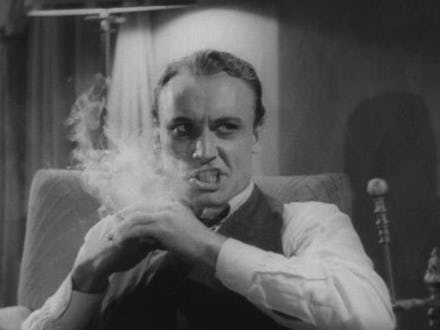A Brief History of How Marijuana Became Illegal in the U.S.

Think of 1619. Powdered wigs. Pilgrim hats. Massive English ships clamoring with colonists seeking riches. Add to the mix, cannabis sativa.
That's right. Weed. By order of King James I, every colonist had to supply 100 crops to the Virginia Company to ship back to England and trade. Even George Washington and Thomas Jefferson grew hemp on Mount Vernon and Monticello. Marijuana wasn't just a desired crop; it translated into big government money. The problem is, while early regulation provided financial purpose and medical protection for the average consumer, deep-seated cultural misconceptions have resulted in today's archaic marijuana laws.
Starting in the 1800s, the young American nation began regulating the pharmaceutical industry and marijuana, starting with laws like the Food and Drugs Act of 1906 — the intended targets being those who mislabeled or polluted drugs with undisclosed narcotics. This resulted in labeling non-medical cannabis, which arguably sparked a fear integrated into drug-related language itself.
Xenophobia was next to grip the nation as a flood of Mexican immigrants fleeing the Mexican Revolution of 1910 introduced marijuana's recreational use. Interestingly, it was only referred to as marijuana "because anti-cannabis factions wanted to underscore the drug's "'Mexican-ness,'" according to NPR. It was meant to play off of anti-immigrant sentiment. The "marijuana menace" then became the battleground with a specifically delineated "us" and "them" — later to expand to "African-Americans, jazz musicians, prostitutes and underworld whites," Eric Schlosser wrote for the Atlantic in 1994.
It didn’t help the early perceptions of marijuana that the Great Depression was right around the corner in 1929. The assumptions that marijuana would incite violent behavior, lead to insanity, addiction and drug abuse and even spur someone to commit sex crimes were fueled by the 25% unemployment rate, increasing animosity toward anyone perceived to be the cause of a floundering economy. By 1931, government research determined that marijuana was linked to heinous criminal activity "primarily committed by 'racially inferior' or underclass communities," leading to 29 states outlawing the drug outright, and in 1932, the federal government urged states to adopt the Uniform State Narcotics Act.
Then policy made its bed with mass media, using film to portray a certain angle around drug culture. The 1936 film "Reefer Madness" by French director Louis Gasnier, portrays the drug as comparable to a vicious mental illness dedicated to corrupting a young, impressionable generation. Here's a quick hit of the film:
Eventually, the Motion Picture Association of America barred even showing any narcotics in film, according to PBS, meaning that the public not only heard incorrect information, but the message was conveyed that even the subject of the drug was entirely taboo.
The 50 years following World War II became a generational battle. Congress established mandatory sentencing laws, including the Boggs Act in 1952 and the Narcotics Control Act in 1956, while the counter-culture generations of the 1960s, '70s and '80s turned drug use into a form of socio-political retaliation. As research has matured, the nation has seen marijuana policy relaxed, now including treatment in addition to criminal penalties, as well as a more tolerable social outlook on its use. However, the generational gap is still reflected by policy. The country remains at odds with itself, since medical and recreational cannabis is legal in some places on the state level, yet still illicit on the federal level as a Schedule I drug because of the Controlled Substances Act of 1970, classifying it as "having high potential for abuse, no medical use and not safe to use without medical supervision." Attempts to overturn this scheduling have failed at the highest level, particularly in the U.S. Supreme Court cases United States v. Oakland Cannabis Buyers' Cooperative and Gonzales v. Raich.
Ultimately, history won't change in a day and public misconceptions still cut deep. As Colorado and Washington state have shown, the legalization of marijuana stands its best chance in state legislatures where lawmakers can more quickly respond to the will of their constituents.
Correction: Feb. 17, 2016